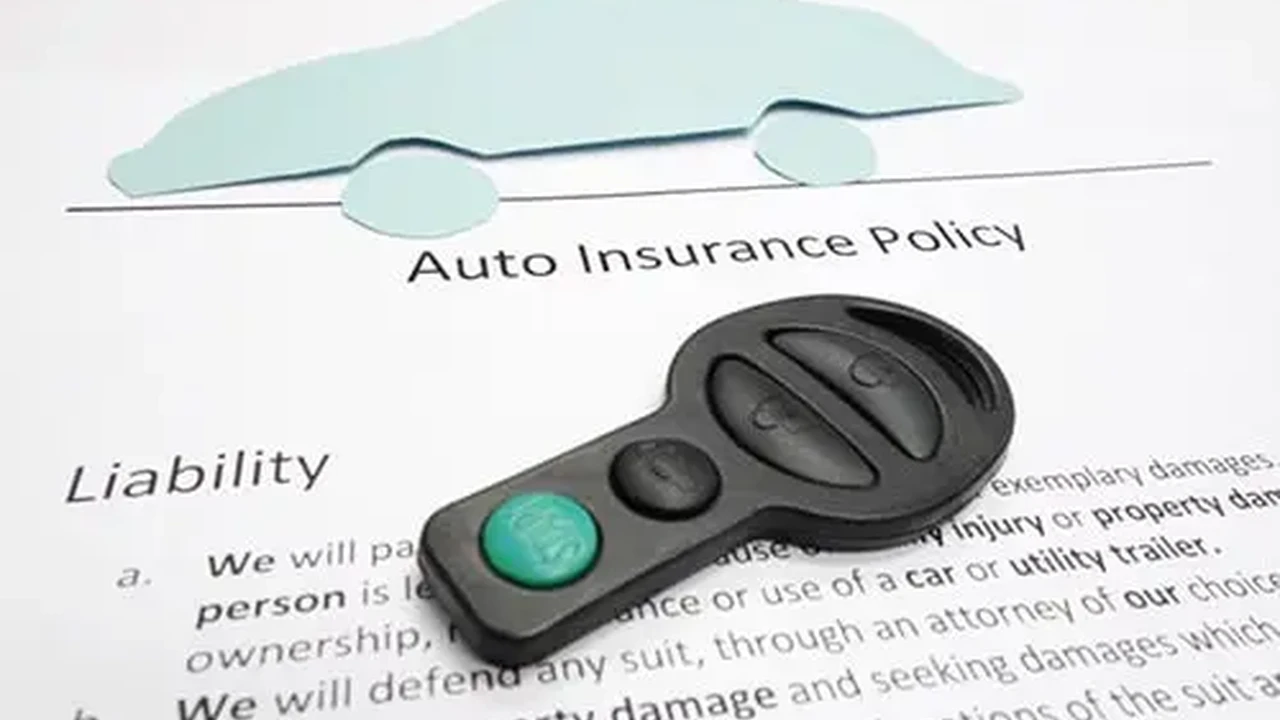Negotiating a Car Insurance Settlement

Understanding Your Car Insurance Claim and Settlement Offer
Alright, so you've been in a car accident. Not fun, right? You've filed a claim, and now the insurance company has thrown you a settlement offer. Maybe it looks okay, maybe it looks like they're trying to lowball you. Either way, understanding the process is key to getting what you deserve. Think of it like this: they're trying to pay as little as possible, and you're trying to get fair compensation for your damages. It's a negotiation, plain and simple.
First things first: what does your policy actually cover? Dig out your policy documents and read through them carefully. Pay attention to your coverage limits, deductibles, and any exclusions. This is your playbook. Knowing what you're entitled to is half the battle. Also, understand the different types of damages you can claim: property damage (fixing your car), medical expenses (doctor bills, physical therapy), lost wages (if you couldn't work because of the accident), and pain and suffering (this one's trickier to quantify, but it's definitely worth pursuing).
The insurance company's initial offer is almost always going to be lower than what you're actually entitled to. Don't take it personally, it's just business. They're hoping you'll accept it without a fight. That's why you need to be prepared to negotiate.
Evaluating Your Damages: Car Repair Costs, Medical Bills, and Lost Wages
Before you start negotiating, you need to know exactly how much your damages are worth. This means getting multiple estimates for car repairs. Don't just go with the first body shop you find. Get at least three quotes to compare. Make sure the estimates are detailed and include all necessary repairs, including parts and labor. If you're dealing with a totaled car, research the fair market value of your vehicle before the accident. Websites like Kelley Blue Book and Edmunds can help with this.
Gather all your medical bills and documentation. This includes doctor bills, hospital bills, physical therapy bills, and prescription costs. If you're still receiving treatment, keep track of all your expenses. Also, get a letter from your doctor outlining your injuries and the treatment you've received, and any expected future treatment. This is crucial for proving the extent of your medical damages.
If you've lost wages due to the accident, document your lost income. Get a letter from your employer stating how many days you've missed and your hourly wage or salary. Include pay stubs to verify your earnings. If you're self-employed, you'll need to provide documentation of your income, such as tax returns or bank statements.
Don't forget about pain and suffering. This is the most subjective part of the claim, but it's still important. Keep a journal of how the accident has affected your life. Document your pain, emotional distress, and any limitations you're experiencing. This journal can be valuable evidence when negotiating your settlement. A common method for calculating pain and suffering is the "multiplier" method, where you multiply your economic damages (medical bills, lost wages) by a factor of 1.5 to 5, depending on the severity of your injuries.
Crafting Your Demand Letter: Presenting Your Case for a Fair Settlement
Now that you've gathered all your documentation, it's time to write a demand letter to the insurance company. This letter is your opportunity to present your case and demand a fair settlement. Be clear, concise, and professional. State the facts of the accident, your injuries, and your damages. Include copies of all your supporting documentation, such as police reports, medical bills, repair estimates, and lost wage statements. Be specific about the amount of money you're demanding.
In your demand letter, explain why you believe the other driver was at fault for the accident. Cite any traffic laws they violated. Explain how their negligence caused your injuries and damages. Be persuasive and logical. Remember, you're trying to convince the insurance company to pay you what you deserve.
Be polite but firm. Don't be afraid to assert your rights. If you're not sure what to say, there are plenty of sample demand letters online that you can use as a template. Just be sure to customize the letter to fit your specific circumstances. Set a deadline for the insurance company to respond to your demand letter. Typically, 30 days is a reasonable timeframe.
Responding to the Insurance Adjuster: Counter Offers and Negotiation Tactics
Once the insurance company receives your demand letter, they'll assign an adjuster to your case. The adjuster will review your claim and may contact you to ask questions. Be polite and cooperative, but don't give them any information that could hurt your case. Remember, the adjuster is working for the insurance company, not for you. They're trying to minimize the amount of money they have to pay out.
The adjuster will likely make a counteroffer that's lower than your demand. Don't be discouraged. This is just the beginning of the negotiation process. Review the adjuster's counteroffer carefully and identify any areas where you disagree. Prepare a counteroffer of your own, explaining why you believe your damages are worth more than the adjuster is offering. Back up your counteroffer with evidence.
Be prepared to negotiate back and forth with the adjuster. This process can take time, so be patient. Don't be afraid to stand your ground, but also be willing to compromise. The goal is to reach a settlement that's fair to both parties. Don't reveal your bottom line too early in the negotiation. Let the adjuster make the first move. Be confident and assertive. Know your rights and be prepared to fight for them.
When to Hire a Car Accident Lawyer: Protecting Your Rights and Maximizing Your Settlement
Sometimes, negotiating with the insurance company can be frustrating and time-consuming. If you're not getting anywhere, or if you're dealing with serious injuries, it may be time to hire a car accident lawyer. A lawyer can handle all aspects of your claim, from gathering evidence to negotiating with the insurance company to filing a lawsuit if necessary.
A lawyer can also help you understand your rights and protect you from being taken advantage of by the insurance company. They know the ins and outs of car accident law and can help you maximize your settlement. Most car accident lawyers work on a contingency fee basis, which means they only get paid if they win your case. This makes it affordable for most people to hire a lawyer.
Consider hiring a lawyer if you have serious injuries, if the insurance company is denying your claim, or if you're having trouble negotiating a fair settlement. A lawyer can be a valuable advocate in your corner, helping you get the compensation you deserve.
Specific Product Recommendations for Car Accident Recovery
Okay, so let's talk about some products that can actually help you out after a car accident. These aren't miracle cures, but they can definitely make the recovery process smoother.
Pain Relief: Biofreeze vs. Icy Hot
Biofreeze: This stuff is amazing for muscle soreness and joint pain. It's a topical analgesic that uses menthol to create a cooling sensation that can provide temporary relief. Think of it like a super-powered icy patch. Usage Scenario: Perfect for applying to sore muscles after physical therapy or if you're just feeling stiff and achy. Comparison: Compared to Icy Hot, Biofreeze tends to have a stronger, more immediate cooling effect. Icy Hot has both menthol and methyl salicylate, which creates a warming sensation. Some people prefer the cooling effect, while others prefer the warmth. Price: Around $15-20 for a 4oz tube. You can find it at most drugstores and online.
Icy Hot: As mentioned above, Icy Hot uses both menthol and methyl salicylate for a dual cooling and warming sensation. Usage Scenario: Good for deeper muscle pain and stiffness. Some people find the warming sensation to be more soothing for chronic pain. Comparison: Icy Hot often has a stronger smell than Biofreeze. It also might not be ideal if you have sensitive skin, as the warming sensation can be irritating. Price: Around $10-15 for a 3oz tube. Also widely available.
Support and Comfort: Memory Foam Seat Cushion vs. Lumbar Support Pillow
Memory Foam Seat Cushion: After an accident, sitting for long periods can be excruciating. A memory foam seat cushion can provide extra support and cushioning, reducing pressure on your tailbone and lower back. Usage Scenario: Use it in your car, at your office chair, or anywhere else you spend a lot of time sitting. Comparison: Look for cushions with a non-slip bottom and a breathable cover. Some cushions are contoured to provide even more support. Price: $25-40 on Amazon and at many office supply stores.
Lumbar Support Pillow: Similar to the seat cushion, a lumbar support pillow helps maintain proper posture and reduces strain on your lower back. Usage Scenario: Use it in your car, at your office chair, or even on your couch. Comparison: Look for pillows that are adjustable so you can customize the level of support. Some are made of memory foam, while others are inflatable. Price: $20-35, easily found online.
Organization and Documentation: Car Accident Organizer
Car Accident Organizer: This is a small folder or binder that keeps all your important documents related to the accident in one place. Usage Scenario: Keep it in your glove compartment. It should include things like your insurance card, registration, pen, paper, a small camera (or use your phone), and a copy of the police report. Comparison: You can buy pre-made organizers, or simply create your own using a binder and some dividers. The key is to have everything you need in one convenient location. Price: Pre-made organizers cost around $10-20. DIY versions are even cheaper.
Alternative Pain Management: TENS Unit
TENS Unit (Transcutaneous Electrical Nerve Stimulation): A TENS unit is a small device that delivers mild electrical pulses to your skin, which can help block pain signals and release endorphins. Usage Scenario: Place the electrode pads on the area where you're experiencing pain. Start with a low intensity and gradually increase it until you feel a tingling sensation. Use for 15-30 minutes at a time. Comparison: There are many different TENS units available, ranging in price and features. Some are rechargeable, while others use batteries. Some have pre-programmed settings for different types of pain. Price: $30-$100 on Amazon and at pharmacies.
Remember to always consult with your doctor or physical therapist before using any new products for pain relief.
:max_bytes(150000):strip_icc()/277019-baked-pork-chops-with-cream-of-mushroom-soup-DDMFS-beauty-4x3-BG-7505-5762b731cf30447d9cbbbbbf387beafa.jpg)






